FRENCH BROAD RIVER, Asheville, North Carolina |
||
 |
||
Students seine for macroinvertebrates looking for indicator species of healthy stream ecology. Photo by Elizabeth Douglas |
||
————————————————————————————————— This essay was originally posted to National Geographic's Water Currents blog on January 1, 2017. ————————————————————————————————— Special thanks to Andrew Holcombe, Elizabeth Douglas, and Matt West. —————————————————————————————————
According to geologists, I am the third oldest river in the world, with the first and second places going to the River Nile and the New River (Virginia, West Virginia, and North Carolina). As an old-timer my gradient is low with slow erosion, whereas younger cousins flow more quickly, tumbling down to the sea carrying lots of sediment. My waters flow south to north for 218 miles (351 kilometers), and they helped to shape the Appalachian Mountains. I am the French Broad River, named by French settlers in the region centuries ago at a time when I was one of the two broad rivers in western North Carolina.
The Cherokee have a variety of names for me: Agiqua in the mountains, Zillicoah above Asheville, and Tahkeeosteh after Asheville. As with most indigenous groups around the world, the Cherokee go to the river to pray and perform submergence ceremonies. The phrase “going to water” in the Cherokee language is synonymous with the words for bathing and submerging. Historically, the tribe recognized my floods as a natural part of any river’s cycle, and did not attempt to dam or divert my waters. They knew, too, that I brought rich soil for agriculture when I flooded, and fresh sand for the dirt floors of their dwellings.
The second and third largest craft breweries in the United States (New Belgium and Sierra Nevada) are located on my shores. New Belgium and a local brewpub, Wedge Brewing Company, invite people to their facilities to enjoy a craft beer, and the two companies also collaborate on events to benefit greenways (undeveloped land set aside for recreational use or environmental protection). Since I flow right by the New Belgium facility, I witnessed the construction of their plant on a brownfield property, thereby revitalizing a former landfill and auto parts salvage yard. |
||
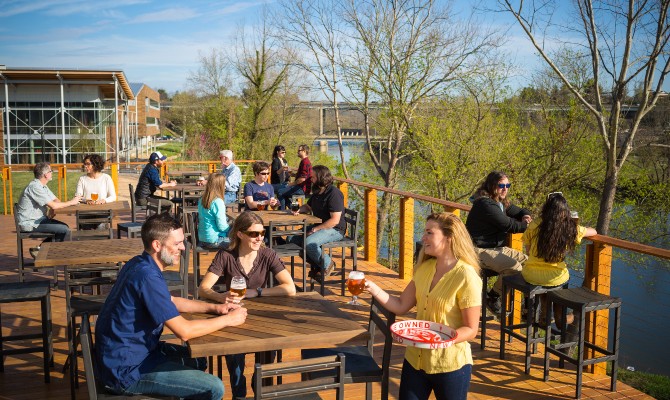 |
||
Enjoying a craft beer alongside the French Broad River. Photo by New Belgium Brewery |
||
I slowly glide by the River Arts District in Asheville where more than 150 artists have studios. As happens in many cities, artists often move into run-down industrial and factory spaces, creating a vibrant new area of town. Then a small café will move in followed by fancier shops. Incrementally rents go up and the artists will be forced again to find new spaces. This is a cycle that occurs often in urban areas, but for now, this site, which artists have designated as their own, is thriving and lively. |
||
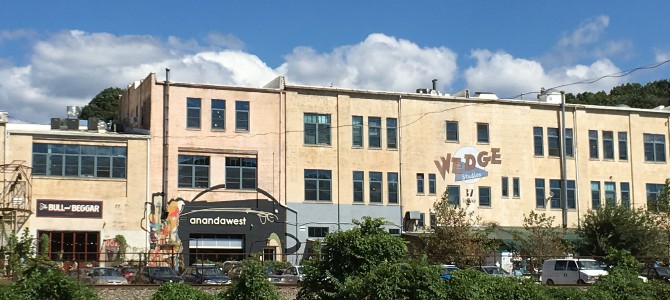 |
||
Converted factory spaces house artists’ studios and other shops. |
||
There is easy access to the water and all kinds of people like to float on my body in kayaks, canoes, stand-up paddleboards, or inflatable tubes. A friend of mine, Matt West, a young “extreme kayaker,” is devoted to being on the water as often as possible. Matt likes to describe his dawn patrol routine. He wakes up before the sun, gets all his gear ready, and is prepared to put his kayak into the water at first light to enjoy several hours of paddling when no one else is around. He’s off the river early and heading to work just as most people are having their first cup of coffee. |
||
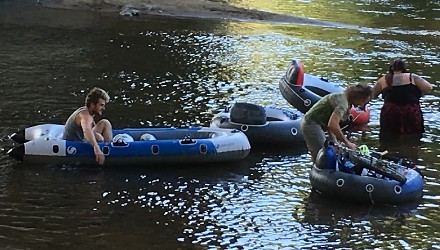 |
 |
|||
With water quality that is passable for swimming, community members enjoy an afternoon float. |
Canoeing the French. |
|||
Floating along my ancient spine, a canoeist today notices some unnatural objects within and alongside my body. Here is a coat covered with a grey-green slime of algae wrapped around a rock. And there is a serpentine piece of some sort of vinyl that sways in the current like a long-dead aquatic creature. As happens to so many of my cousins elsewhere people think that they can dump debris into my body and it will disappear. It isn’t their problem any more. However, these discards reemerge so that future generations must deal with pollution and try and clean up messes left behind by others. A section of my banks are even imbedded with old cars dumped here decades ago in a streamside junkyard. As I flow north toward Tennessee, it sure looks strange to see headlights from a 1940’s Oldsmobile peering out from the roots of a tree buried in the mud on shore. |
||
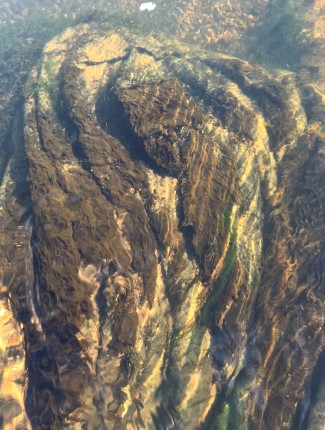 |
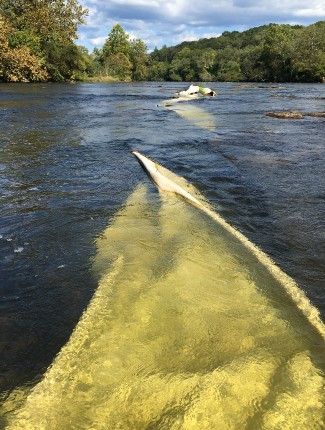 |
|||
An old coat covered with algae wraps around a rock. |
Whose junk is this and who will clean it up? |
|||
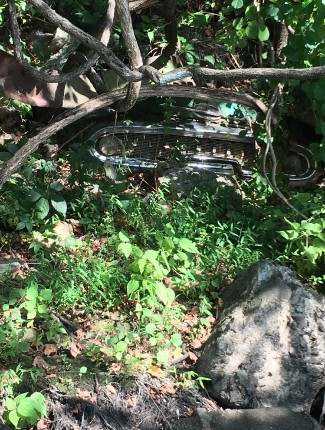 |
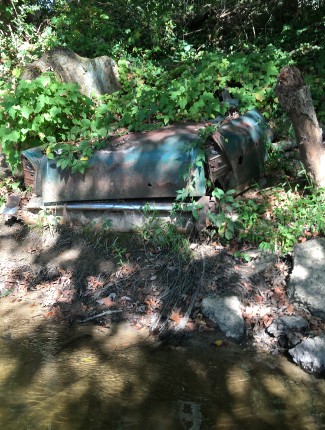 |
|||
Old cars buried along the riverbanks. |
||||
In more and more communities concerned citizens are forming organizations to help my compatriots with revitalization efforts. This is true here in Asheville where the non-profit organization, RiverLink, works tirelessly on my behalf to promote conservation, recreational easements, and greenway development. RiverLink members and volunteers reclaim contaminated land, educate thousands of students each year, and ensure permanent public access to me throughout the seasons. |
||
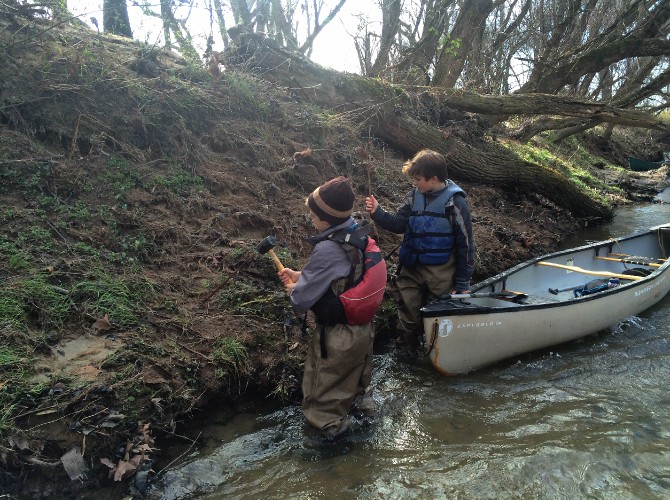 |
||
French Broad River Academy students help prevent erosion by pounding cuttings of native alder or willow into the riverbank. Photo by Andrew Holcombe |
||
Students and faculty at the French Broad River Academy (located on two middle school campuses, one for boys and one for girls, grades 6-8) have centered their curriculum around me! Whether the subject is social studies, humanities, or geography, the focus is on me and my watershed. What a great concept. My water provides inspiration for art and writing classes, and a living laboratory for scientific and mathematical explorations. There are also lessons to be learned paddling tandem in a canoe, which requires teamwork and the ability to make quick decisions based on my surface conditions at any given moment. I wish other schools would follow their lead, so future generations understand the relevance of us rivers in their lives! |
||
next page: Deckers Creek >
< previous page: Narmada River




































